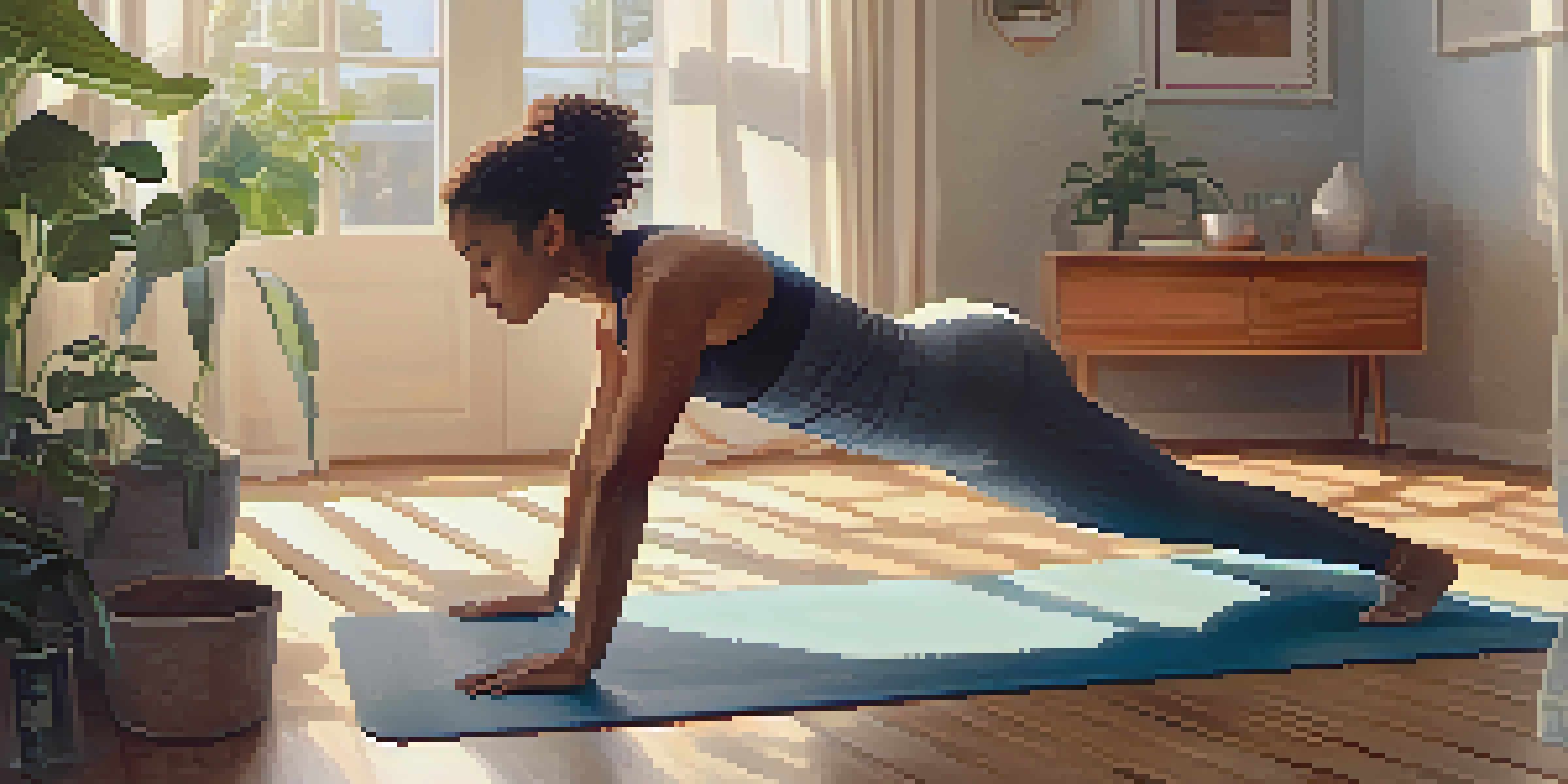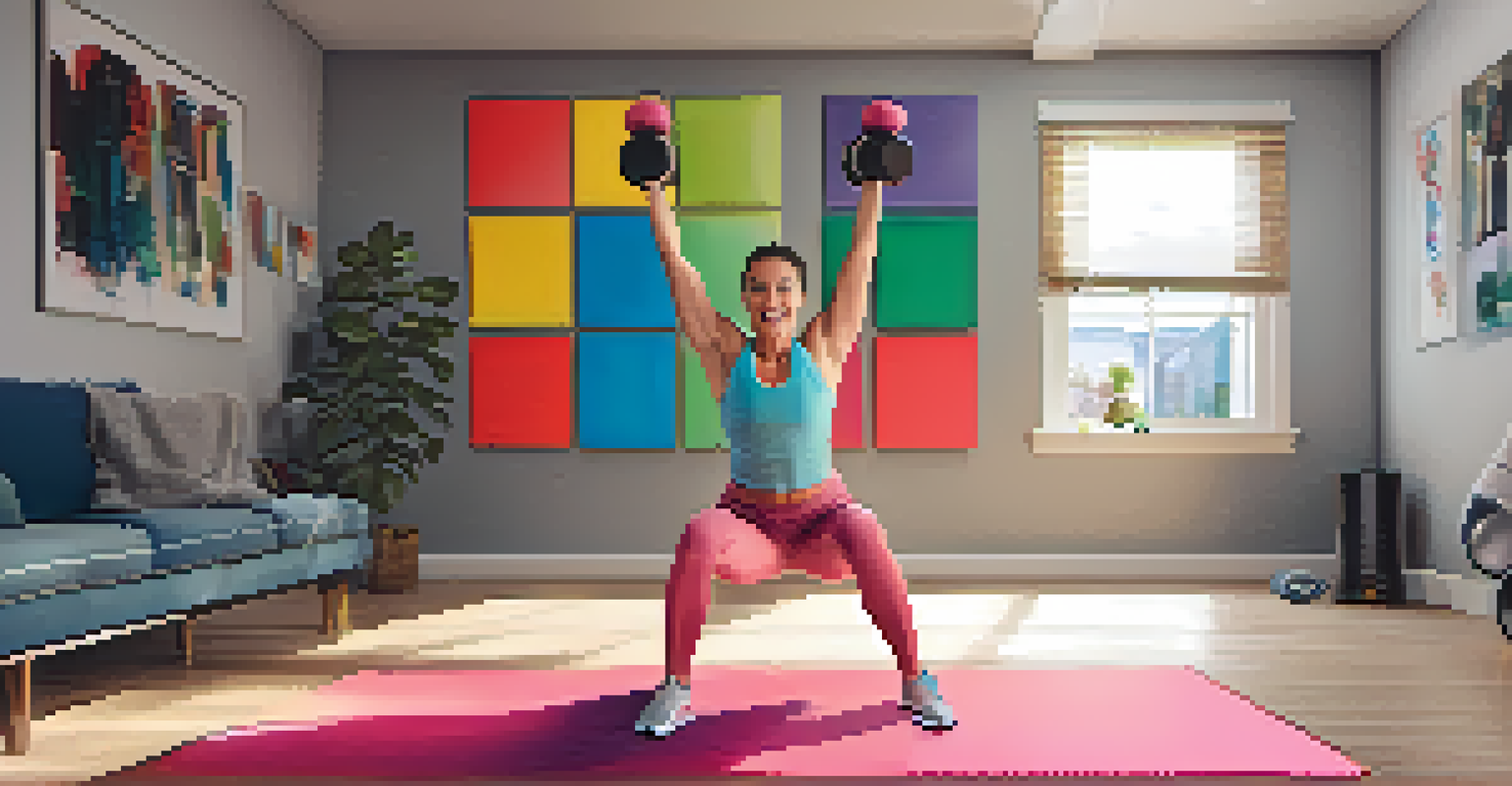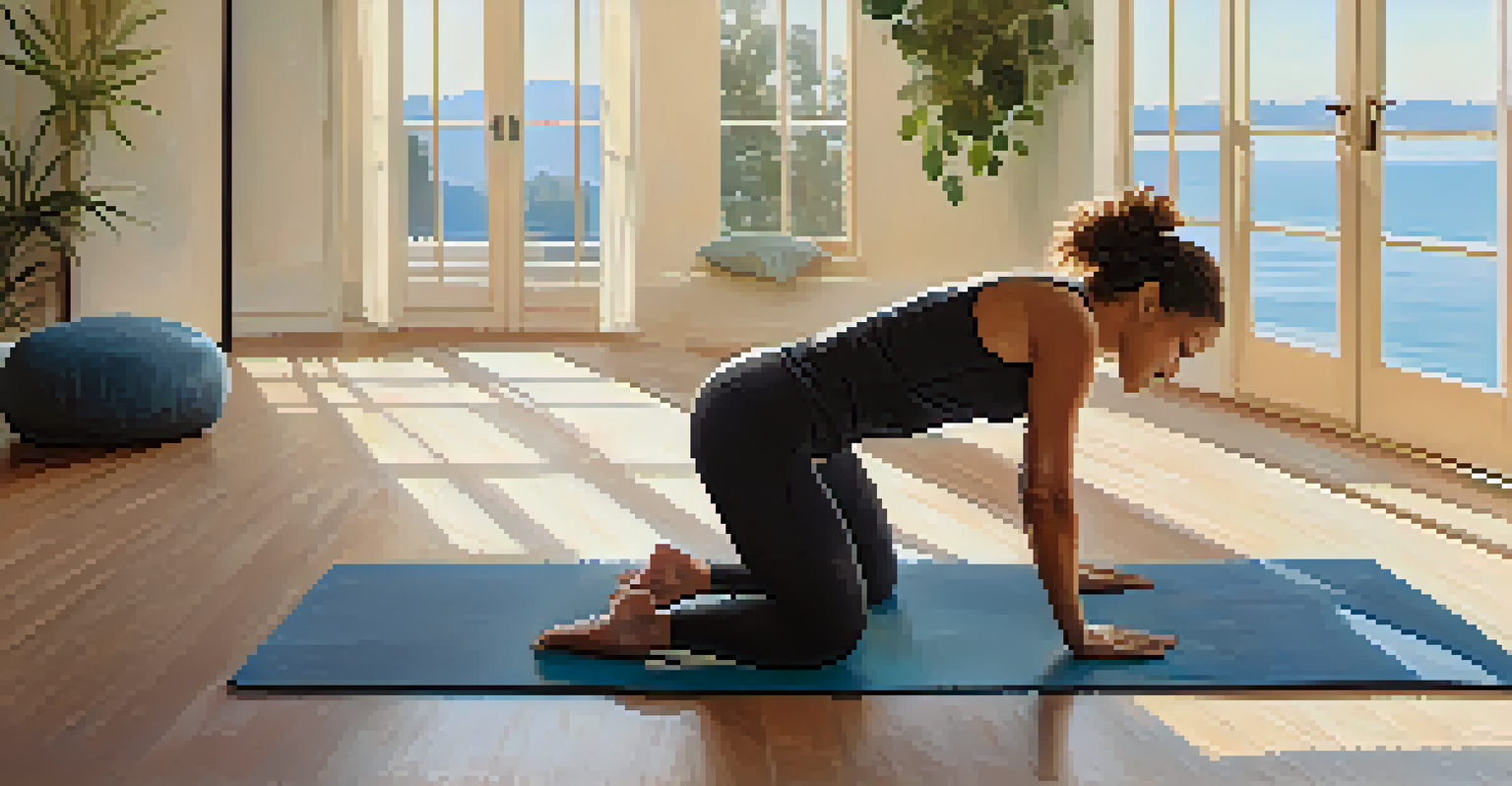Top 10 Bodyweight Exercises for Effective Home Workouts

Why Bodyweight Exercises Are Perfect for Home Workouts
Bodyweight exercises are a fantastic way to get fit without needing any fancy equipment. They use your own weight to build strength, flexibility, and endurance, making them accessible for everyone, regardless of fitness level. Plus, you can do them anywhere, which is perfect for those who prefer working out at home.
The body achieves what the mind believes.
One of the best things about bodyweight workouts is their versatility. You can easily modify exercises to make them easier or harder, allowing you to push your limits as you progress. This adaptability ensures that you stay engaged and challenged over time.
Additionally, bodyweight exercises can improve your functional fitness, which is about training your body to perform everyday activities better. Whether you’re carrying groceries or climbing stairs, strengthening your body in a holistic way will enhance your daily life.
1. Push-Ups: The Classic Upper Body Builder
Push-ups are a classic bodyweight exercise that primarily targets your chest, shoulders, and triceps. They also engage your core, making them a compound movement that works multiple muscles at once. You can perform them in various styles, such as standard, incline, or decline, to keep your routine fresh.

To do a push-up, start in a plank position with your hands slightly wider than shoulder-width apart. Lower your body until your chest nearly touches the floor, then push back up. If you find this challenging, try doing them on your knees to build strength before progressing to the full version.
Bodyweight Exercises for All Levels
Bodyweight exercises are accessible and adaptable, making them suitable for everyone, regardless of their fitness level.
Incorporating push-ups into your routine not only builds strength but also improves your overall stability. They’re a great way to enhance your upper body strength and can be easily done in a small space at home.
2. Squats: The Foundation of Lower Body Strength
Squats are an essential exercise for building lower body strength, targeting your quadriceps, hamstrings, and glutes. They mimic the natural movement patterns we use in daily life, making them functional and beneficial for overall mobility. Plus, they can easily be modified to suit your fitness level.
Strength does not come from physical capacity. It comes from an indomitable will.
To perform a squat, stand with your feet shoulder-width apart and lower your hips back as if sitting in a chair. Keep your chest up and knees behind your toes. Aim for depth as you get stronger, and remember to engage your core throughout the movement.
Not only do squats increase strength, but they also improve your balance and coordination. Adding variations like jump squats or single-leg squats can further challenge your muscles and keep your workouts exciting.
3. Planks: The Ultimate Core Strengthener
Planks are a powerhouse exercise for developing core strength and stability. A strong core is vital for overall fitness, as it supports nearly every movement you make. By engaging multiple muscle groups, planks can also help improve your posture and balance.
To perform a plank, start in a push-up position, but instead of lowering yourself, hold your body in a straight line from head to heels. Keep your elbows directly below your shoulders and engage your core. Aim to hold the position for 20-30 seconds, gradually increasing the time as you get stronger.
Key Exercises for Strength and Endurance
Incorporating exercises like push-ups, squats, and burpees can effectively build strength and enhance your overall fitness.
You can spice up your planking routine with variations like side planks or plank jacks. These modifications not only challenge your core but also work your obliques and shoulders, ensuring a well-rounded workout.
4. Lunges: A Dynamic Lower Body Workout
Lunges are another fantastic bodyweight exercise that focuses on your legs and glutes. They help improve balance and coordination while also enhancing muscle symmetry, which is crucial for preventing injuries. Variations like walking lunges or reverse lunges can keep your routine dynamic and engaging.
To perform a basic lunge, step forward with one leg, lowering your hips until both knees are bent at about a 90-degree angle. Be sure your front knee stays above your ankle and your back knee hovers just above the ground. Push through your front heel to return to the starting position.
Incorporating lunges into your workout can significantly boost your lower body strength and endurance. As you progress, you can add weights or increase your repetitions for an added challenge.
5. Burpees: A Full-Body Challenge
Burpees are a high-intensity, full-body exercise that combines strength and cardio. They’re excellent for burning calories and improving your overall fitness level. Although they can be challenging, the rewards are well worth the effort, making them a popular choice for many fitness enthusiasts.
To perform a burpee, start in a standing position, then drop into a squat and place your hands on the floor. Kick your feet back into a plank position, do a push-up if you like, jump your feet back to your hands, and explosively jump up. It’s a move that gets your heart racing!
Importance of Cooling Down
Cooling down and stretching after workouts is essential for recovery, flexibility, and injury prevention.
Incorporating burpees into your routine can elevate your heart rate and build muscular endurance. They’re perfect for a quick workout when you’re short on time and can be modified by eliminating the jump or push-up if needed.
6. Mountain Climbers: Cardio Meets Core Strength
Mountain climbers are a fantastic way to get your heart pumping while working your core and legs. They mimic the motion of climbing a mountain, which engages multiple muscle groups, making them an effective full-body workout. Plus, they can be done in a small space, making them perfect for home workouts.
To perform mountain climbers, start in a plank position and bring one knee towards your chest, then quickly switch legs, as if you’re running in place. Keep your hips low and maintain a steady pace to maximize the effectiveness of the exercise.

Incorporating mountain climbers into your routine not only boosts your cardiovascular fitness but also strengthens your core. As you get used to the movement, you can increase your speed for an added challenge.
7. Glute Bridges: Strengthen Your Posterior Chain
Glute bridges are a fantastic exercise for strengthening your glutes and lower back. A strong posterior chain is essential for maintaining good posture and preventing injuries, especially if you sit for long periods. This exercise can be performed anywhere and requires no equipment, making it ideal for home workouts.
To perform a glute bridge, lie on your back with your knees bent and feet flat on the floor. Press through your heels as you lift your hips towards the ceiling, squeezing your glutes at the top. Lower back down and repeat for several repetitions.
Adding glute bridges to your routine not only enhances your strength but can also improve your athletic performance. You can increase intensity by adding single-leg variations or holding the bridge position for longer.
8. Cool Down: The Importance of Stretching
After completing your bodyweight workout, it’s crucial to cool down and stretch. Stretching helps prevent muscle soreness and improves flexibility, which is essential for maintaining a healthy range of motion. It also signals to your body that it's time to recover, making it a vital part of your fitness routine.
Incorporate stretches that target the muscle groups you worked during your workout, such as your chest, legs, and back. Holding each stretch for 15-30 seconds will enhance muscle relaxation. This practice can help you feel more limber and ready for your next workout.
Remember, recovery is just as important as the workout itself. By dedicating time to cool down and stretch, you’ll improve your overall performance and reduce the risk of injuries, allowing you to continue enjoying your bodyweight exercises for years to come.